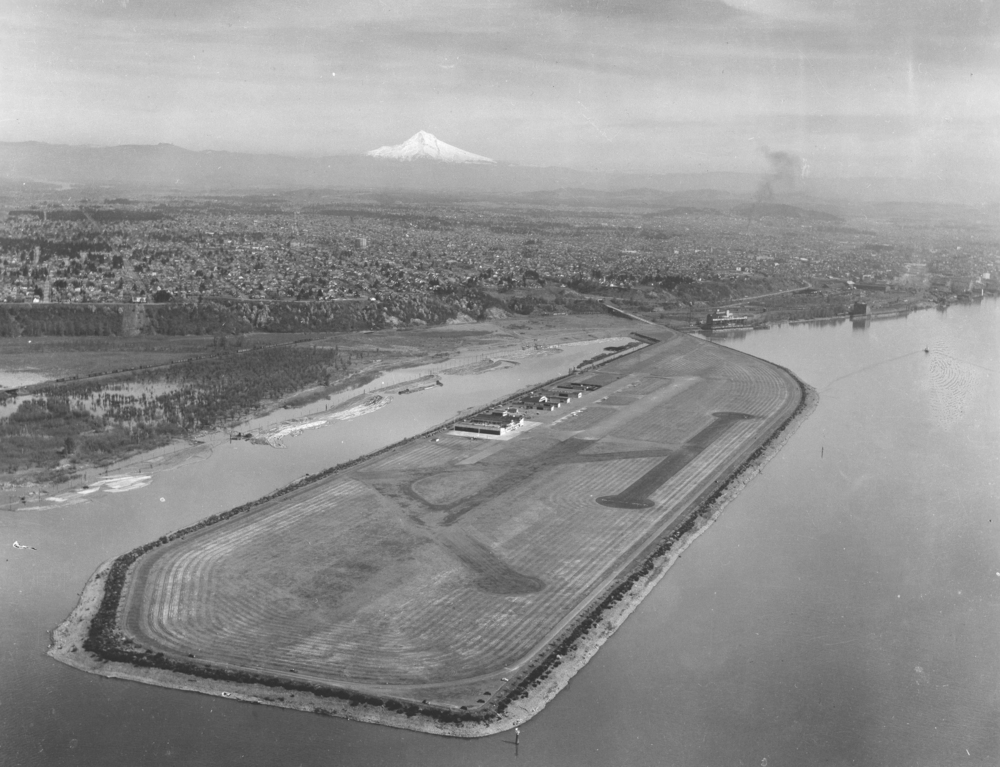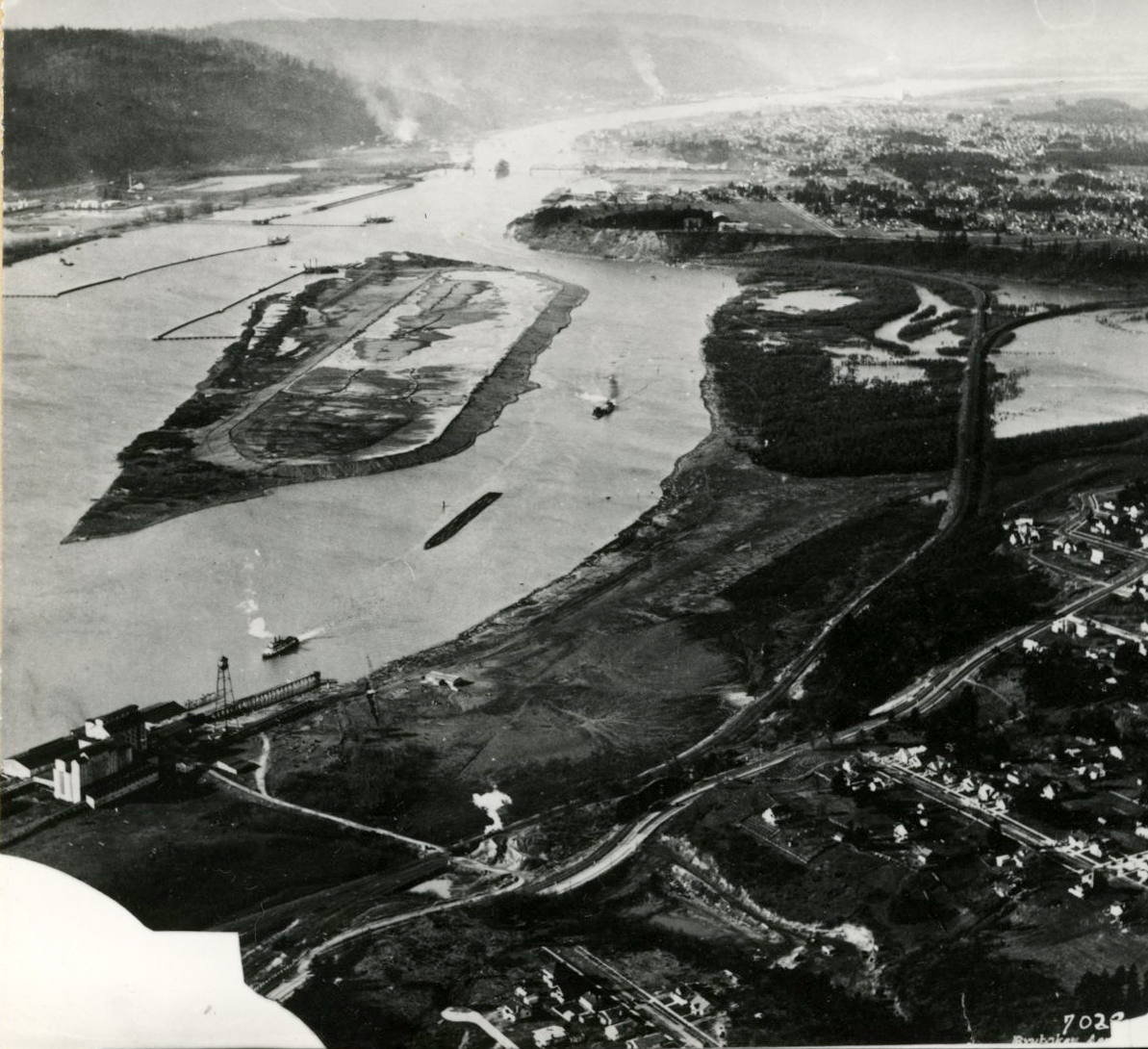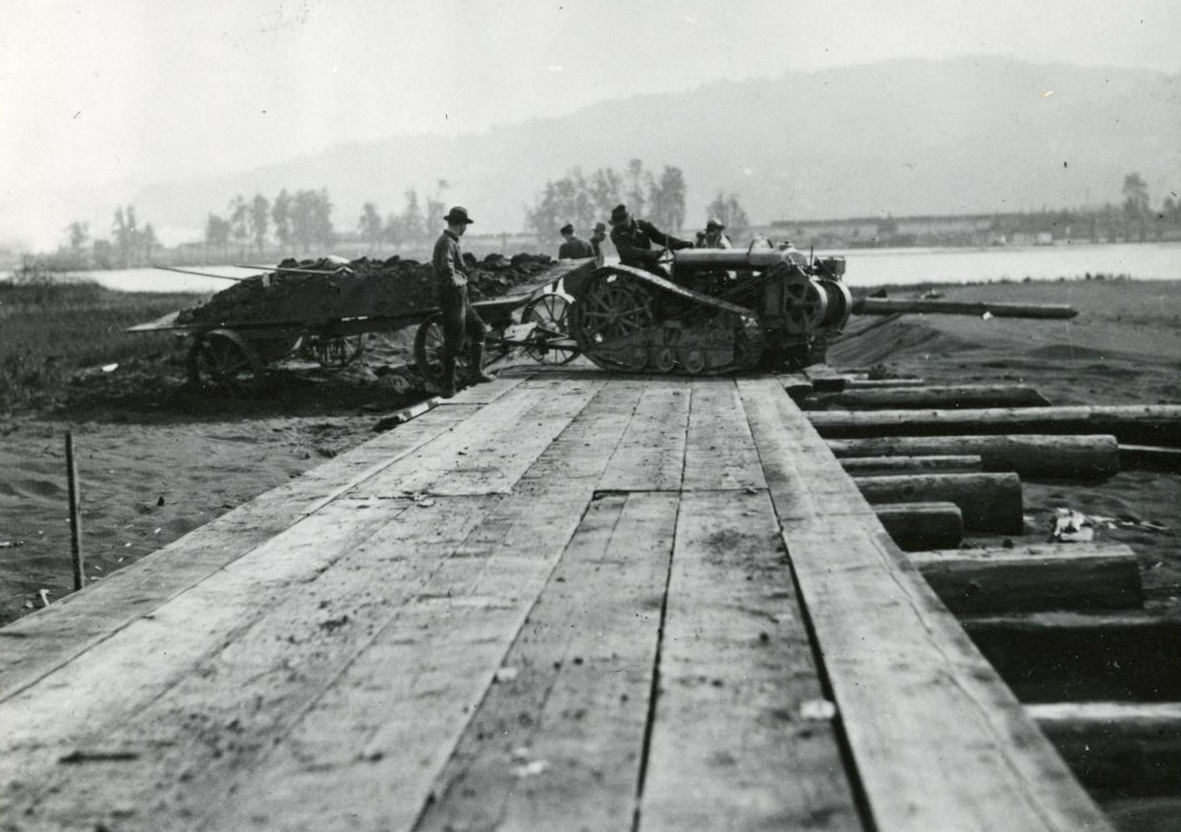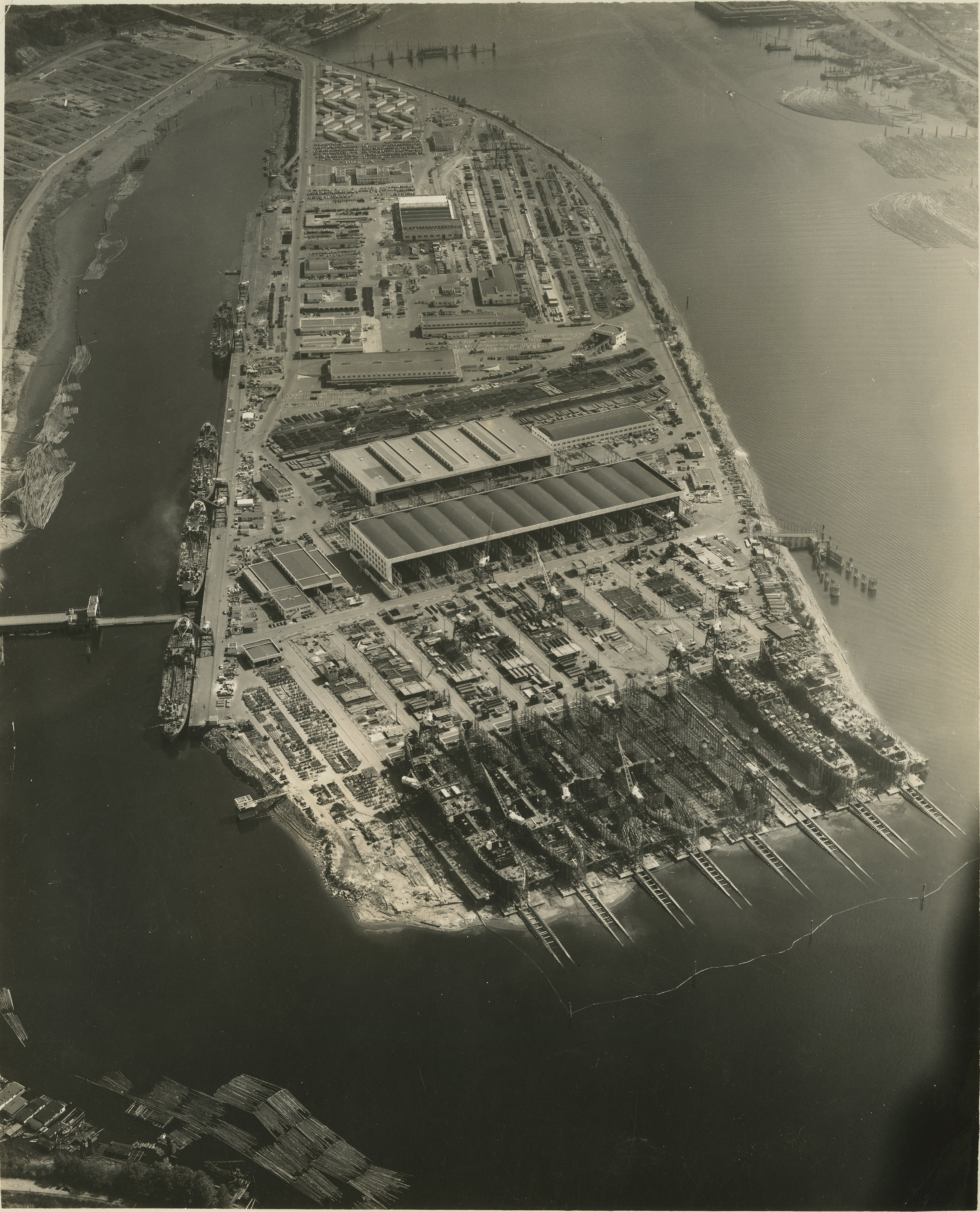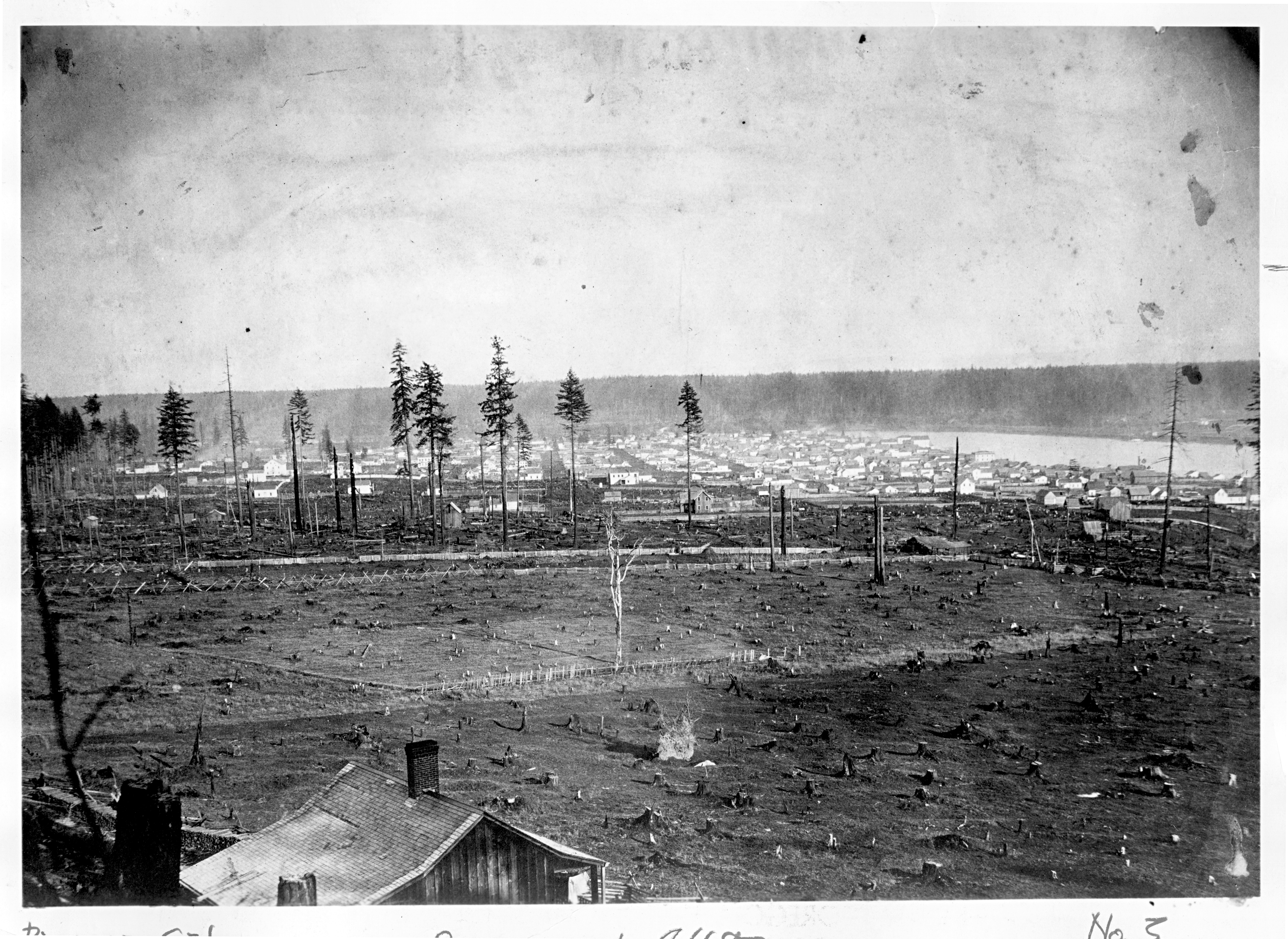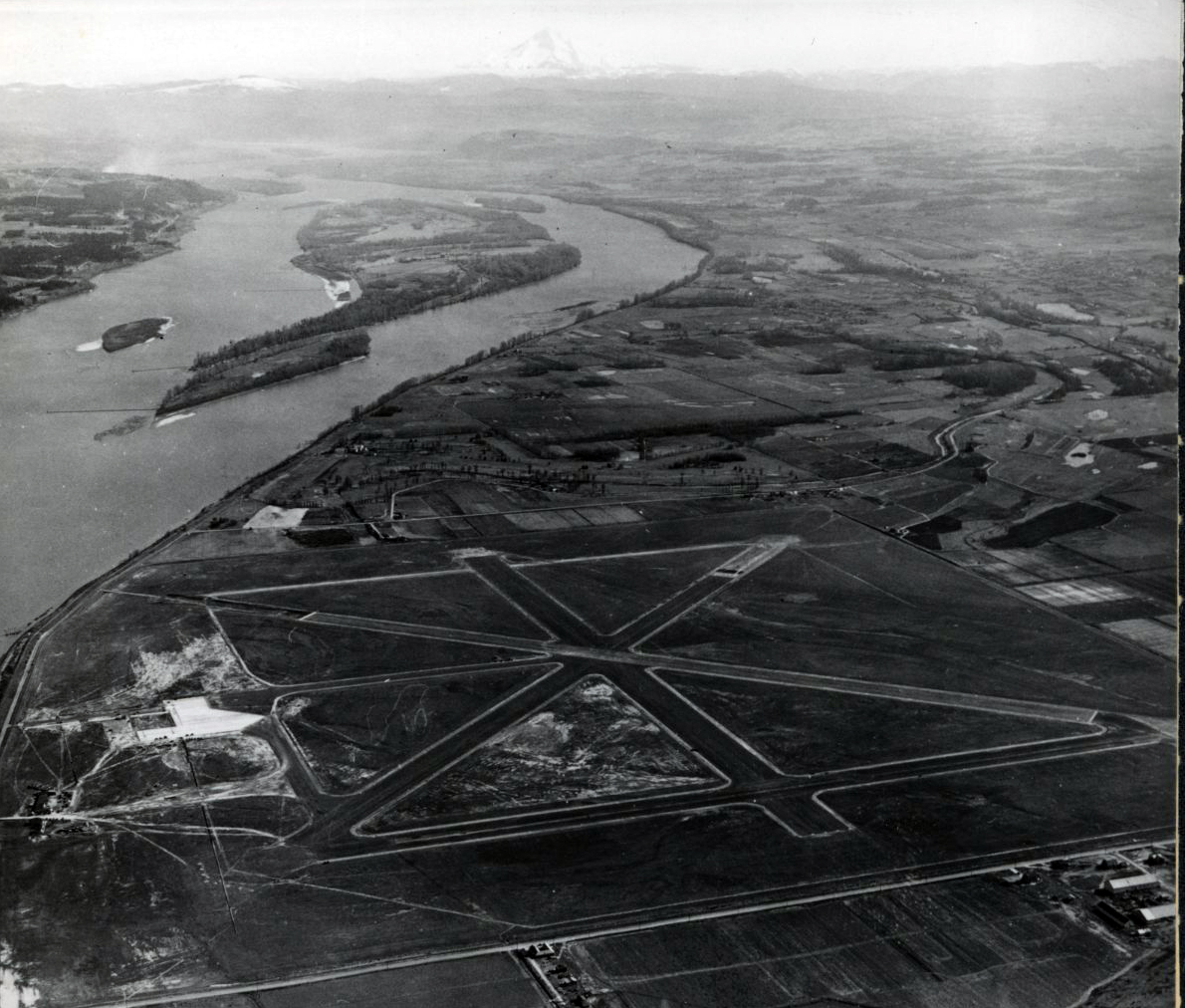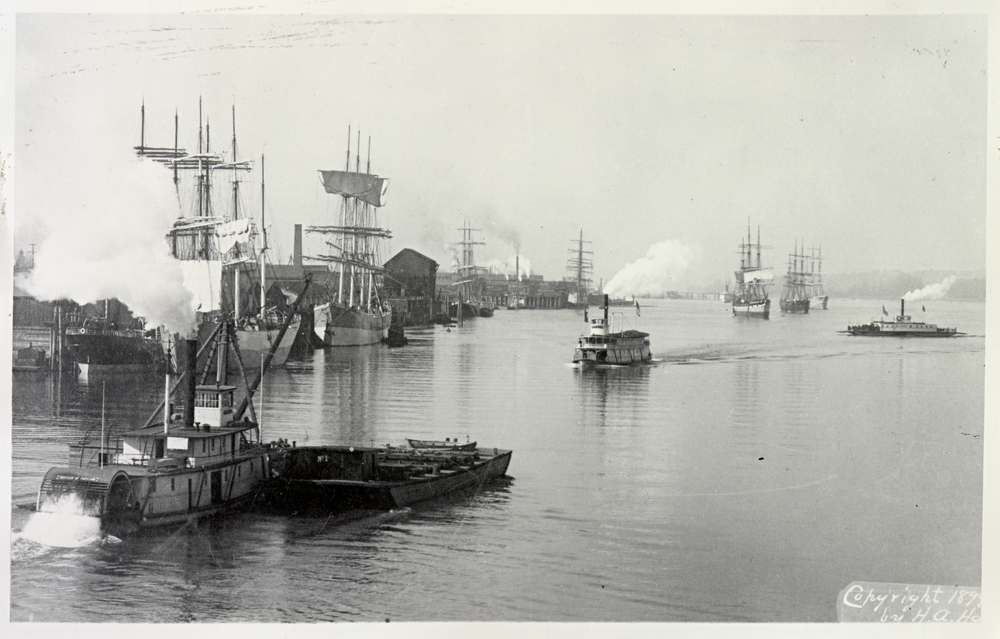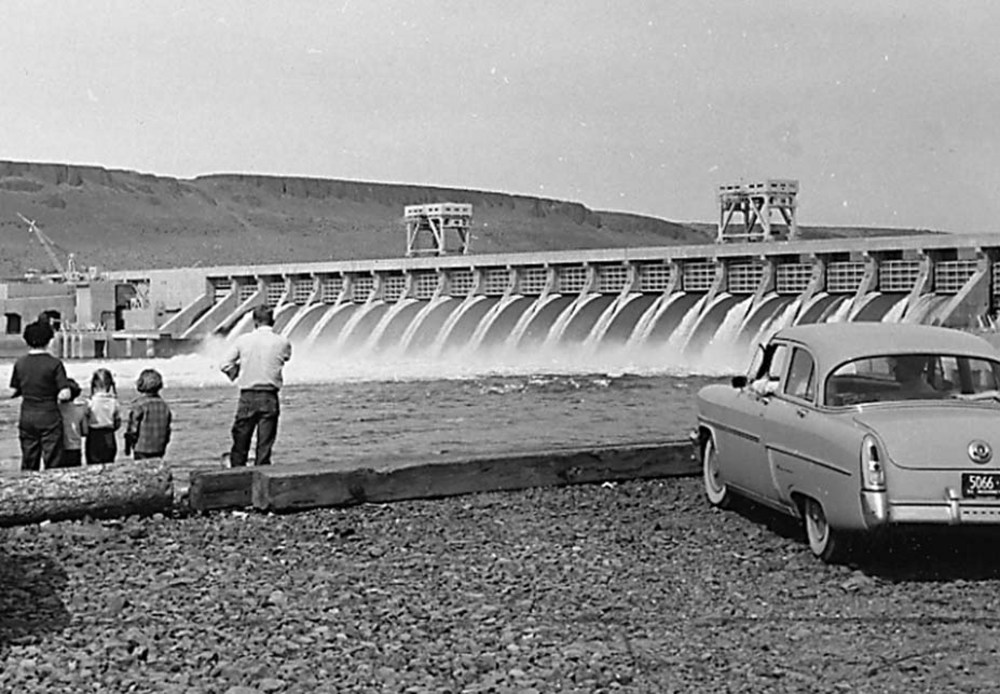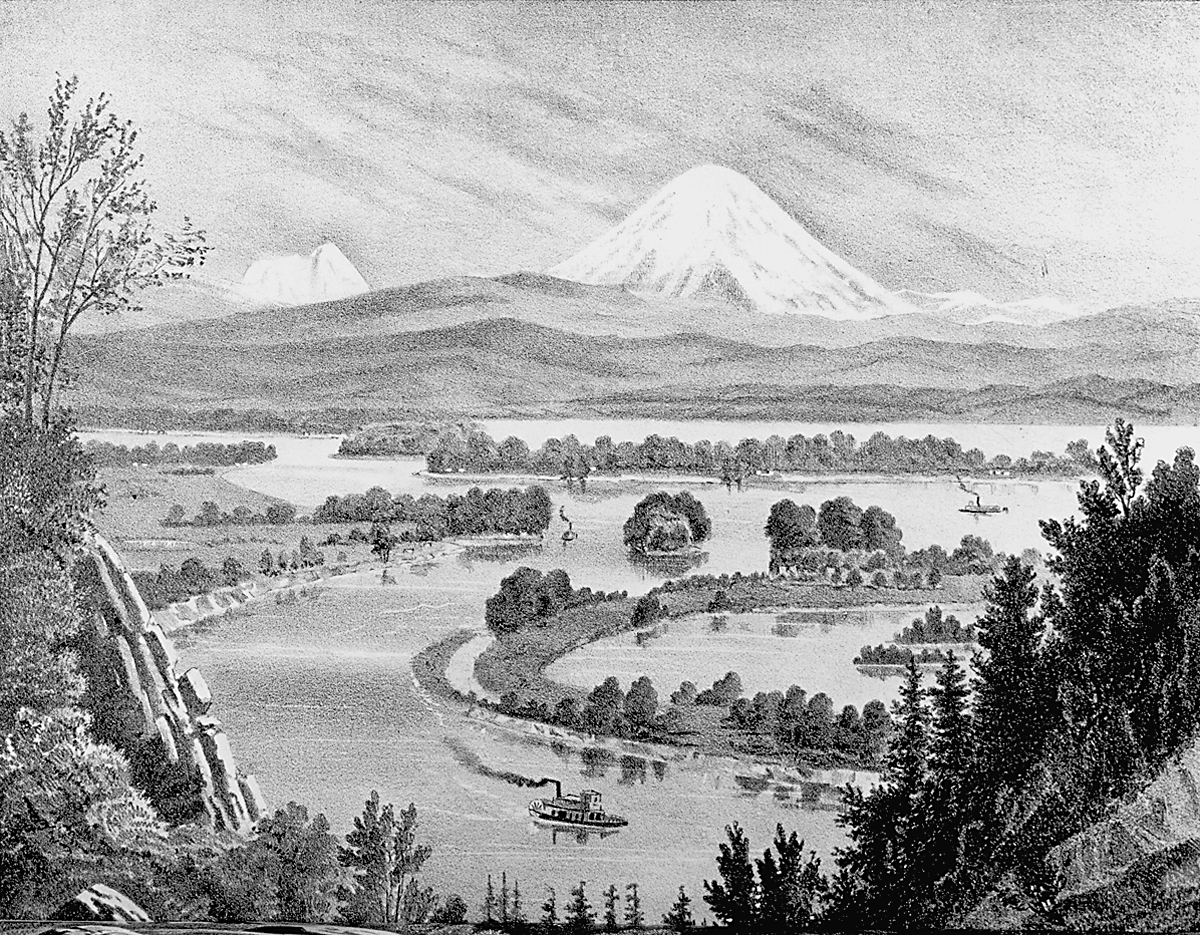Swan Island sits about eight miles above the mouth of the Willamette River. The island has played a significant role in the development of waterborne commerce in Oregon and the history of the Port of Portland. It was first noted as Willow Island on an 1844 chart by Lt. John Wilkes in the atlas accompanying the report of the U.S. Exploring Expedition. It is not known why the name was changed to Swan Island.
A bar in the Willamette River at Swan Island obstructed navigation, and as early as 1873 the U.S. Army Corps of Engineers began congressionally authorized improvements at the location, consisting mostly of dredging. This improvement work was essential to keep the ship channel open on the Willamette and Columbia rivers between Portland and the Pacific Ocean.
Under natural conditions, two channels existed at Swan Island, requiring annual dredging to maintain navigation around the island. In 1876, the army engineer in charge of the Portland office, Major James Wilson, recommended closing one channel and focusing all maintenance efforts on the other. Because of the cost and disruption to commerce, the Corps did not immediately carry out Major Wilson's plan; but in 1927, the Port of Portland received permission from Congress to permanently close the north channel of Swan Island and dredge a 35-by-1,155-foot channel on the south side of the island. The Port had purchased the island in 1922 to facilitate the navigation improvements needed at that point on the Willamette River.
From 1927 to 1940, Swan Island was the site of Portland's airport. Congress had allowed the Port of Portland to connect Swan Island to the mainland with fill so that a runway could be built. The fill for the runway and the addition of dredged material from the excavation of the main navigation channel increased the size of Swan Island by three times, to 900 acres. The Port completed the airstrip in time for a visit by Charles Lindbergh in September 1927. The increase in air traffic over the next decade necessitated a larger airport, and in 1940 the airport was moved to its current location in northeast Portland along the Columbia River.
During World War II, Swan Island was the site of one of the Kaiser shipyards and worker housing. At the request of the United States government, contractor and industrialist Henry J. Kaiser developed a major shipbuilding operation at Portland and across the Columbia at Vancouver, Washington. Between 1942 and 1945, the Kaiser shipyards produced 147 T-2 tankers at Swan Island, making it the Liberty and Victory ship capital of the United States. In all, 455 ships were produced at Kaiser's Oregon shipyards during World War II. The temporary worker housing created on Swan Island during the war was used to accommodate some of the people displaced by the Vanport flood in 1948. Many of the displaced had to remain for up to a year at Swan Island because of the post-war housing shortage in Portland.
After World War II, Swan Island became the center for Port of Portland operations, including the dry dock and ship repair facilities. Since Swan Island is centrally located in Portland's harbor, many industrial operations have developed there, especially for distribution, warehousing, and manufacturing activities.
-
![]()
-
![]()
Aerial of Swan Island Airport, 1927.
Courtesy Oregon Hist. Soc. Research Lib., Orhi45552
-
![]()
Temporary plank road to Swan Island Airport.
Courtesy Oregon Hist. Soc. Research Lib., 009372
-
![]()
Aerial of Swan Island shipyards.
Courtesy Oregon Hist. Soc. Research Lib., Orhi49686
-
![]()
Aerial view of Swan Island airport terminal, c.1927.
Oregon Historical Society Research Library, Digital Collections, Oregon Journal Negative Collection; Org. Lot 1368; Box 371; 0371N5565 -
![]()
Aerial view of Swan Island, 1949.
Oregon Historical Society Research Library, Digital Collections, Al Monner news negative; Org. Lot 1284; Box 33; 1516-3
Related Entries
-
![Columbia River]()
Columbia River
The River For more than ten millennia, the Columbia River has been the…
-
![Kaiser Shipyards]()
Kaiser Shipyards
During World War II, industrialist Henry J. Kaiser established three sh…
-
![Portland]()
Portland
Portland, with a 2020 population of 652,503 within its city limits and …
-
![Portland International Airport]()
Portland International Airport
Portland has used two locations for its major commercial airport—Swan I…
-
![Port of Portland]()
Port of Portland
The Oregon Legislature created the current Port of Portland in 1970 by …
-
![U.S. Army Corps of Engineers]()
U.S. Army Corps of Engineers
The U.S. Army Corps of Engineers, a hybrid military and civilian federa…
-
Willamette River
The Willamette River and its extensive drainage basin lie in the greate…
Related Historical Records
Map This on the Oregon History WayFinder
The Oregon History Wayfinder is an interactive map that identifies significant places, people, and events in Oregon history.
Further Reading
MacColl, E. Kimbark. The Growth of a City: Power and Politics in Portland, Oregon 1915 to 1950. Portland:The Georgian Press, 1979.
Willingham, William F. Army Engineers and the Development of Oregon: A History of the Portland District, U. S. Army Corps of Engineers. Washington, D C.: GPO, 1983.

